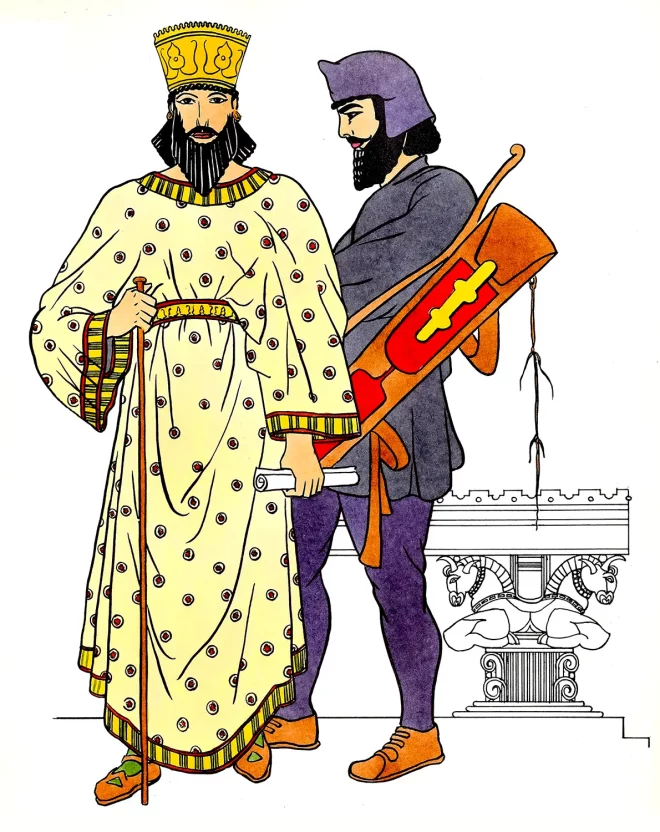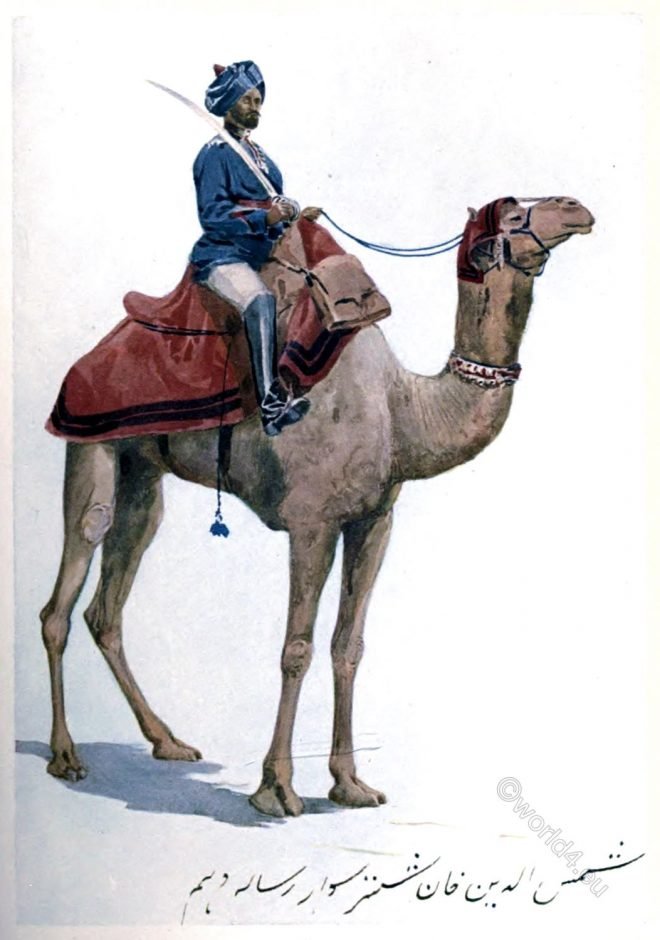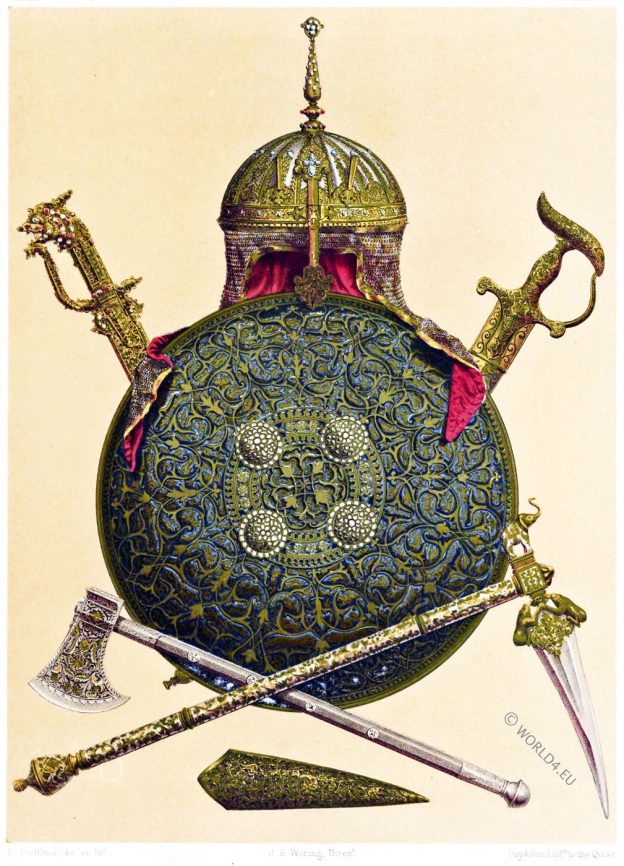Atlas of the Indochina Exploration Tour by Doudart de Lagree (1823-68), published in Paris in 1874.
Tag: Asian military
Costume of an ancient Persian king and his archer.
Costume history of the ancient world. Persian king and his archer.
A Camel-Sowar of the 10th Bengal Lancers. India c. 1880.
THE men of the loth Bengal Lancers are mostly Sikhs; they have blue and red lance-pennons, blue kurta and blue cone-shaped turban.
A military Mandarine. Portrait of Van-ta-zhin 1805.
His boots are of satin, with thick soles of paper: these are always worn by the mandarines and superior Chinese.
Indian Grand Mogul Babur leading a campaign. Military Costumes of India.
Babur setting out with his army. Indian Grand Mogul, leading a campaign. War costumes of the 16th century.
Char-aina. Thick padded Coat with four body pieces of plate Armor.
Armory of H.H. The Nawab of Tonk, Rajputana (Muhammad Ibrahim Ali Khan 1848-1930), Central India.
Japan. The natives and the conquerors. Ainu and Japanese. Weapons.
Japan. The natives and the conquerors. Ainu and Japanese. Combat and fencing armor. – Various Weapons. Soldiers, Craftsmen, Coolis.
Lakshmibai, Rani of Jhansi, a leader of the great Indian uprising of 1857.
Lakshmibai, Rani of Jhansi Lakshmibai (Hindi: लक्ष्मीबाई, Lakṣmībāī, originally Manikarnika मणिकर्णिका Maṇikarṇikā; born 1828 in Benares; deceased on 17th June, 1858 in Gwalior) was a Rani (Queen) of Jhansi and… Read More
Metallic Art. Weapons and armament from India, 17th c.
Mughal Empire. Indian Helmet, shield and swords.
Tien An Men parade. Chinese National Day 1954.
Chinese National Day. Tien An Men parade 1954. National Day, October 1- here in Pecking’s Tien An Men Square, Chairman Mao Tse-tung reviews the marching columns of the paraders. Source:… Read More










